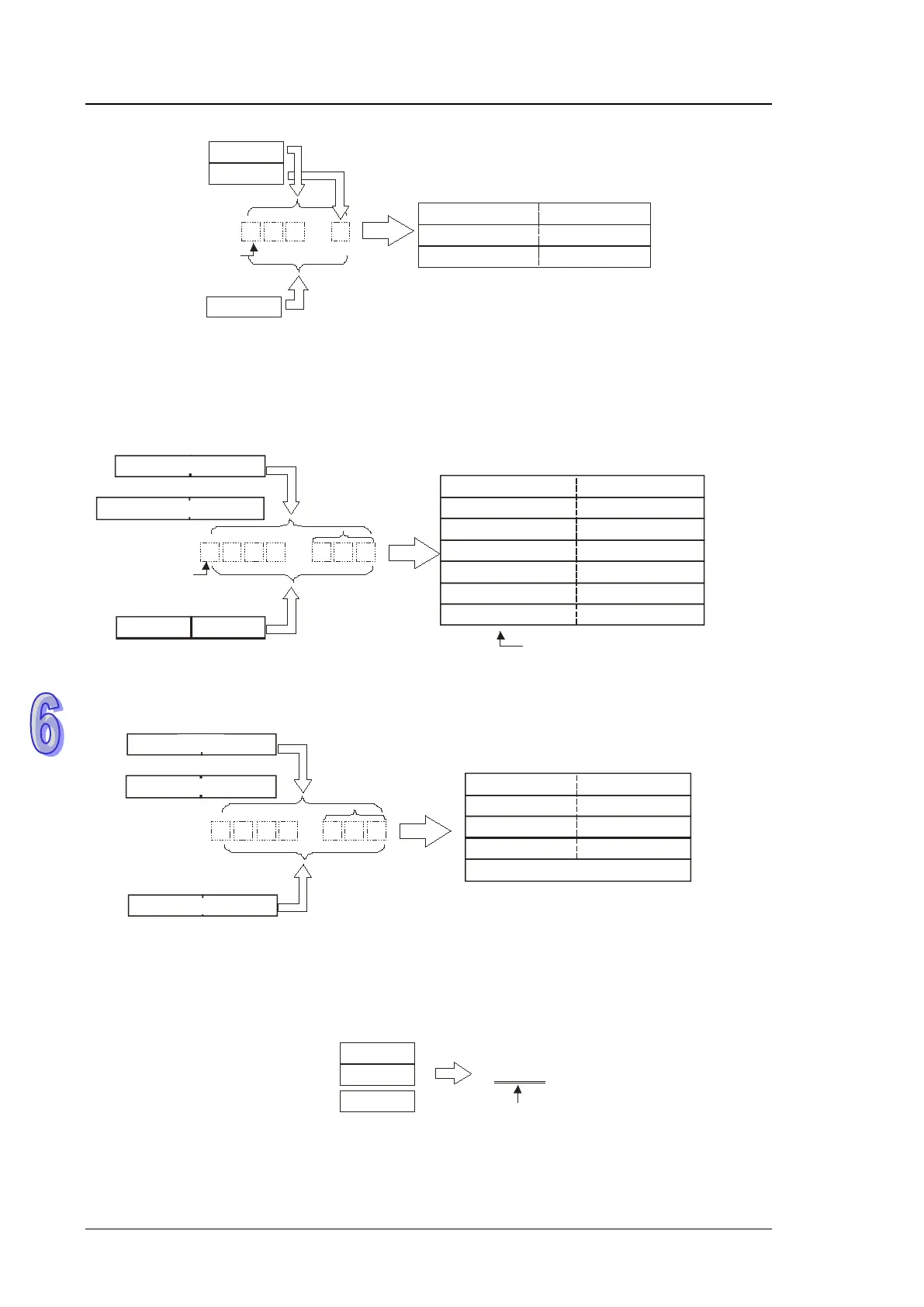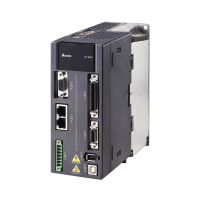AH500 Programming Manual
6-460
b15
b0
b7 b8
16#00()Ending character
S1+1
.
D+1
D+2
16#31(1)
5
1
-123
-
1
2
3
32(2)16# 16#2E(.)
33(3)16#
S2
16#2D(-)
D
S1
Sign
3. D$STR:
The value in S
1
should be within the range between 2 and 13.
The value in S
1
+1 should be within the range between 0 and 10, and should be less than or
equal to the value in S
1
minus 3.
The value in S
2
should be within the range between -2147483648 and 2147483647.
b15
b0
b7
b8
(S1+1, S1)
.
D+1
D+2
D+3
(S1+2, S1+3)
D
Number of characters
Number of decimal places
Sign
First ASCII code
Sign
Second ASCII code
Third ASCII code
Fourth ASCII code
Fifth ASCII code
Sixth ASCII code
Seventh ASCII code
Eighth ASCII code
Ninth ASCII code
32-bit binary number
D+4
Tenth ASCII code
D+5
S2+1
High word
Low word
S2
16#00
()Ending character
Twelfth ASCII code
D+6
Elevnth ASCII code
Automatically stored at the end of the string
Suppose the number of characters is 8, the number of decimal places is 3, and the value is
-654321. The conversion result is as follows.
b15
b0
b7 b8
(S1+1,S1)
.
D+1
D+2
D+3
D+4
(S1+3, S1+2)
(S2+1, S2)
8
3
-654321
- 6 5 4 2 3 1
2D(-)16#
16#36(6)
35(5)16#
16#34(4)
2E(.)16#
16#33(3)
32(2)16#
16#31(1)
D
32-bit binary number
16#00 ( )Ending character
4. If the value in S
2
is a positive value, the sign code in D is 16#20. If the value in S
2
is a negative
value, the sign code in D is 16#2D.
5. The code in D which represents the decimal point is 16#2E.
6. If the value in S
1
+1 is larger than the number of digits in S
2
, the missing digits are replaced by
0.
Binary number
13
10
54321
0.0000054321
The missing digits are replaced by 0.
Number of characters
Number of decimal places
7. If the value in S
1
is larger than the number of digits in S
2
plus the number of characters which
include the decimal point and the sign, the missing digits are replaced by 0.

